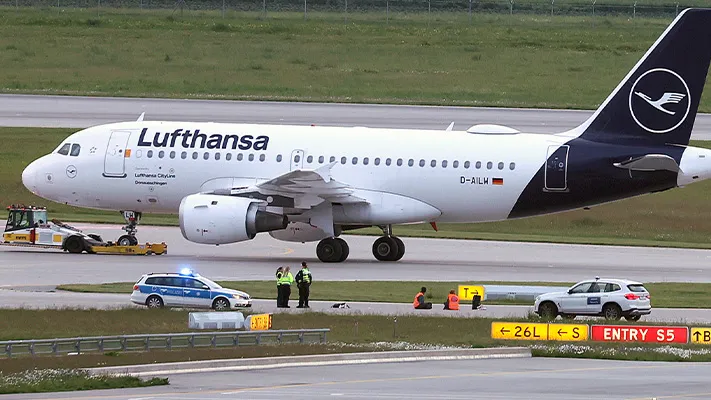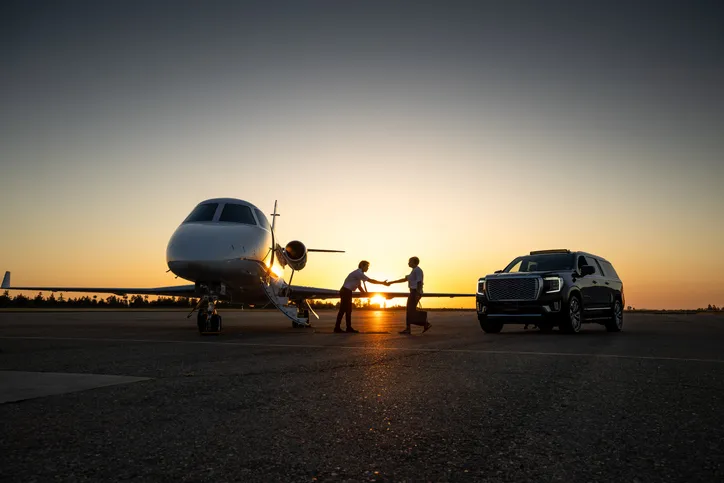
Climate activists recently sowed chaos at an airport in Munich, Germany. On May 18, members of the green group Last Generation crashed the gates and glued themselves to a runway in protest of government subsidies for flights.
Everything at the Munich airport ground to a halt, leading to flight delays and cancellations on the busy Whitsun holiday weekend. A few of the protesters, anticipating the ire of travelers, carried signs that translate to “Problem is the government, not our holiday,” according to Euronews.

Eight protesters were eventually arrested. The incident led to calls for increased airport security and heightened criminal penalties by German government officials. Current law doesn’t let German prosecutors throw the book at such agitators. A proposed law could see them in jail for up to two years.
No glue on American runways
Better post-9/11 airport security and stiffer legal penalties may explain the lack of sticky protests at American airports. However, significant, seemingly ever-increasing subsidies should make American air travel ripe for peaceful protests or public policy criticism at the very least.
Yet criticism is pretty thin on the runway here from center-left policy voices. With the exception of criticism of private air travel (“Tax Private Jets Into Oblivion,” one Jacobin headline advised), concerns over subsidies in America largely come from more free-market mouths.
Marc Scribner, transportation policy analyst for the Reason Foundation, laid out the extent of the subsidies. The Airport Improvement Program is the “main federal grant program” to funnel money to airports, he said, though other subsidies have been giving that program a run for its money.
By statute, the AIP provided $3.4 billion a year in grants. That was recently boosted to $4 billion a year by the bipartisan Federal Aviation Administration reauthorization enacted by Congress and President Joe Biden. The Infrastructure Investment and Jobs Act created two such subsidies that are funded through the federal government’s fiscal 2026: $2.89 billion a year for the Airport Infrastructure Grant program and $1 billion a year for the Airport Terminals program.
Scribner sees the subsidy trend moving in a more dependent direction, at least for the next several years.
“Before IIJA, large airports had been willing to give up all of their AIP apportionments in exchange for eliminating the cap on Passenger Facility Charges, which are federally authorized local airport user fees,” Scribner told the Washington Examiner. “But the large increase in subsidies under IIJA has put airport financing reform on the back burner, and little was changed in the latest FAA reauthorization through FY28 because the new IIJA grant programs run through part of that authorization.”
Because of this fire hose of federal spending, he predicted, “Moving toward self-sufficiency won’t happen until at least FY29.”
Rich people wings?
Do airport subsidies amount to subsidies to the wealthy? Scribner says the case is complicated but that there’s something to the charge.
“Larger hub airports are more commercialized and self-financed, while smaller airports are more dependent on grants,” he said. “What this means is that subsidy programs tend to focus on general aviation airports mainly used by wealthy private aviation users.”

He added that airports in Alaska are “somewhat of an exception, with more nonwealthy bush pilots.”
Scribner also weighed into the lack of subsidy criticism in the center-left transportation policy space.
“If anything, they want the aviation system more oriented to rich people because many want to convert airline customers to train riders,” he said. “The unions also like federal grants, regardless of where they are spent.”
It is still true that a majority of Americans do not fly on an annual basis, but barely. The Ipsos-Airlines for America poll found that 49% of people flew at least once last year and that 86% had flown in their lifetimes. (Before airlines were deregulated in 1978, 25% of Americans had flown in the past year, and 63% had flown ever.)
So, which is it? Are airports rich people things, or are they increasingly middle-class things? Chris Lehmann, author of the book Rich People Things, was asked to weigh in on the matter. He thinks that airports are rich people things, though with growing middle-class participation.
CLICK HERE TO READ MORE FROM THE WASHINGTON EXAMINER
Airports are “transitional,” Lehmann told the Washington Examiner. “They have become display spaces for bad public art, which is a pretty solid tell. But airport adjacent hotels are warrens of downwardly mobile middle-class existence, by and large.”
He added that airplane seating “remains the one sphere of American life where class privilege is forthrightly acknowledged,” with earlier boarding for those with higher status, along with more space and unpriced drinks that keep on flowing.







